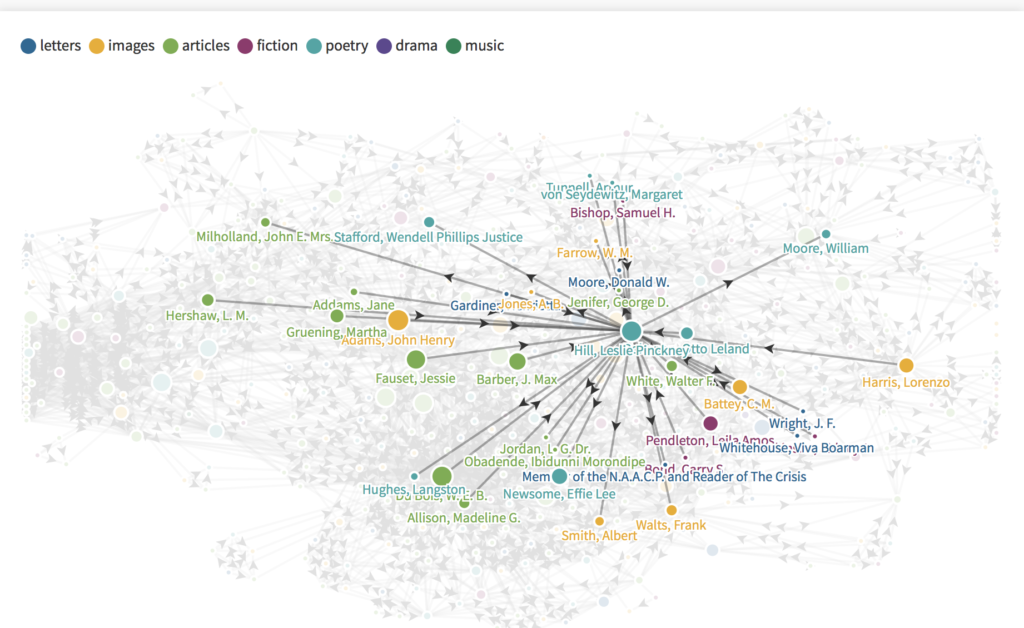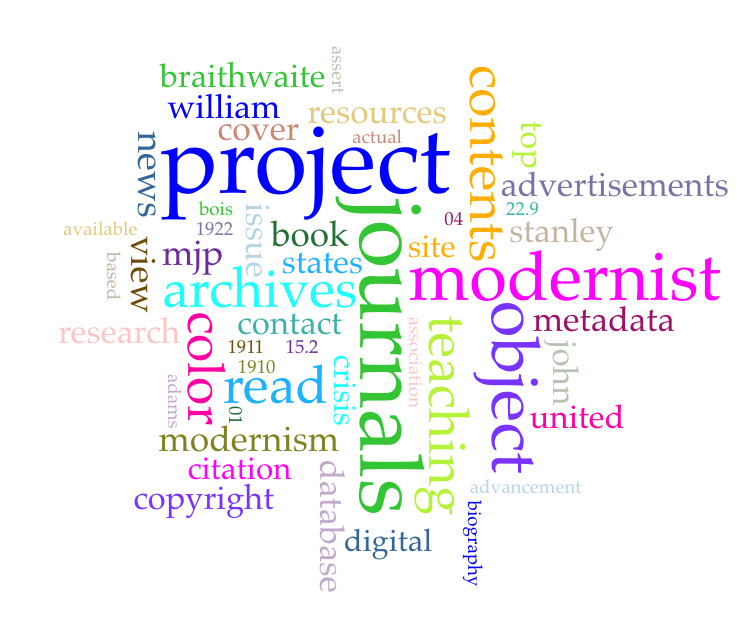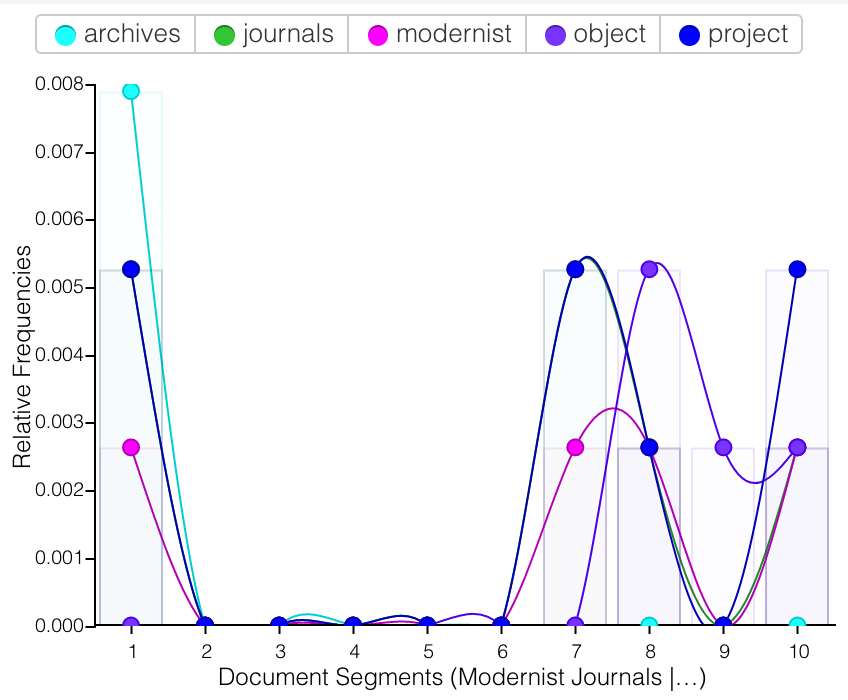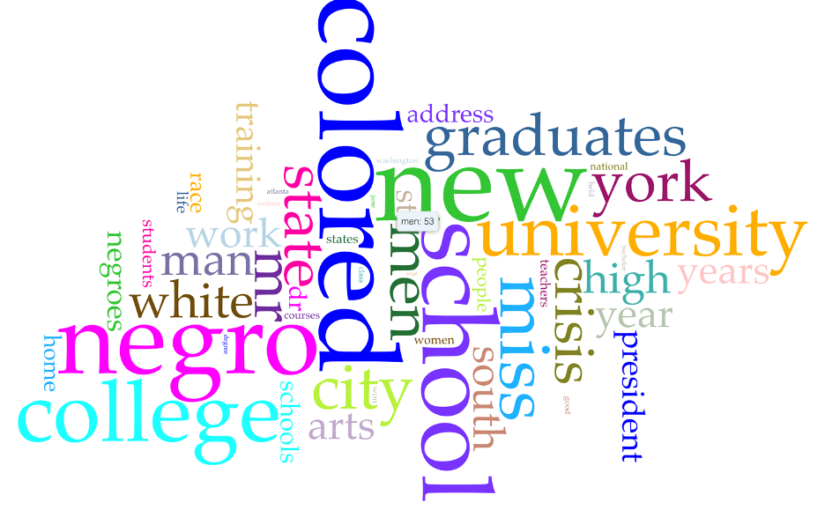So, it’s 1910 and you want to be a writer at “The Crisis?” How can you become as popular and interconnected as the famous W.E.B Du Bois? Is it your genre? Perhaps more so the time you spend writing for “The Crisis?”
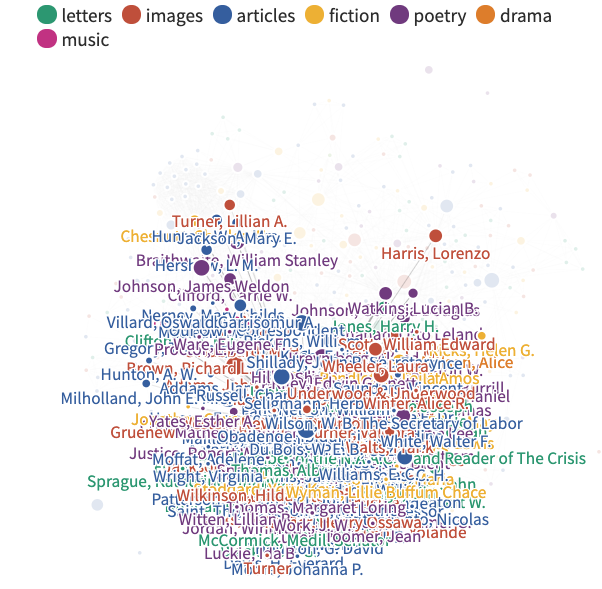
Well, for one Du Bois was one of the founders of The Crisis so right off the bat he has an advantage. Now as one can clearly see, by highlighting over W.E.B Du Bois, he is connected to nearly every author, so much that the lines and the thickness don’t show up. Only the biggest circles can be seen. I intentionally wanted to show how intense all the interconnectedness can be. This cluster was shown when clicking on Du Bois’ tab, which was blue (articles). So is that it? Should someone just write articles to become the most popular? Du Bois was indeed writing a lot of articles, but also for a long time too.
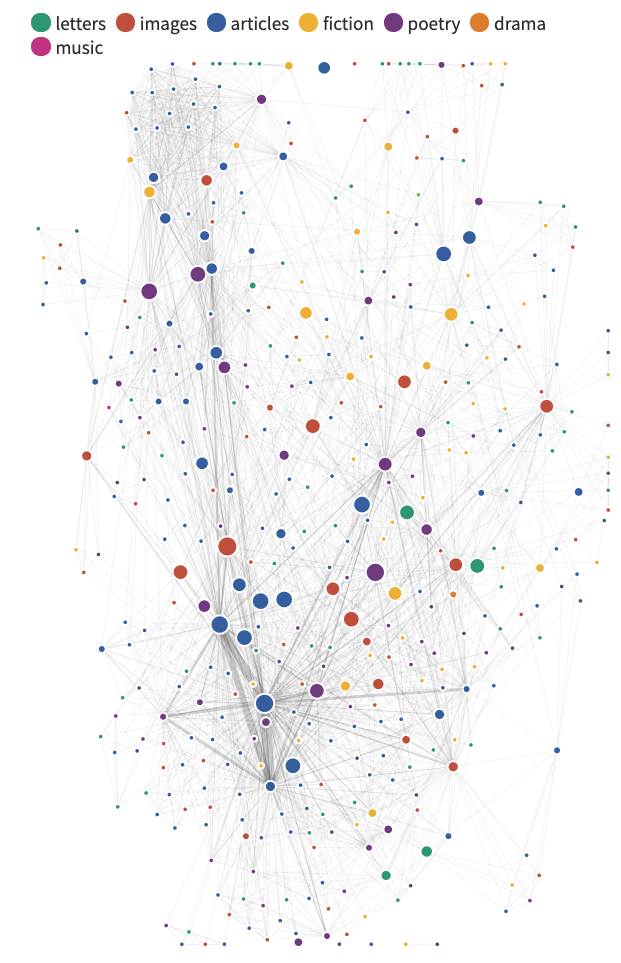
At a first glance, it appears as though writing articles and poetry automatically get you high interconnectivity. But is this always the case? As it turns out, no. You also have to be connected with other authors in their publications too. Basically like contributing to their work.
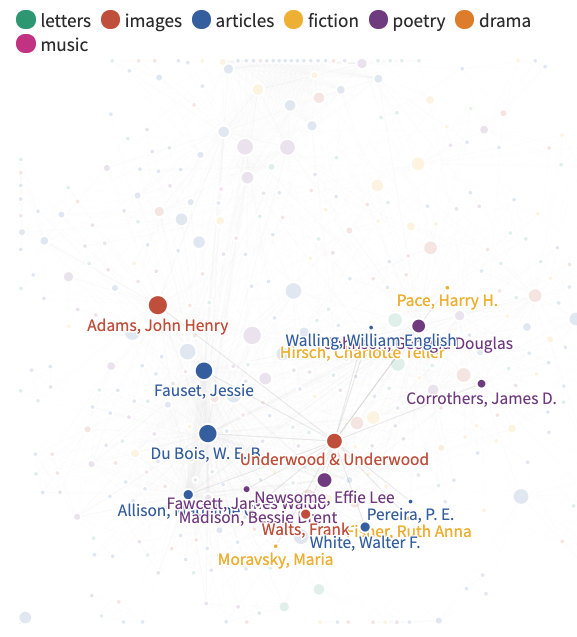
Take a look at Underwood & Underwood (in orange) for example, they have one of the biggest circles but are not connected as much compared to Du Bois. Now why is this? Well this author did not write for the crisis as long and wrote less than Du Bois. Not to mention they were not as connected with the other authors.
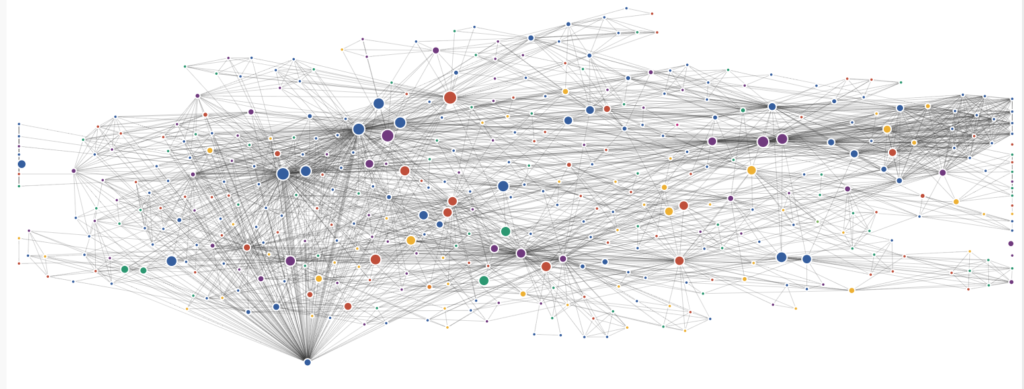
When looking at Madeline G. Allison for instance, she is very interconnected but she has a smaller circle than Underwood & Underwood. To be clear hers is the blue circle dragged down in the left corner. Why is this? Well in this instance, she will likely have been with The Crisis for longer than Underwood & Underwood and has more connections to other authors. In short, the longer you are writing and the more connected you are to authors at The Crisis, the bigger your circle and the more connections you will have. On the question of what you should write about, i.e. articles, fiction or poetry seem to be some of the most popular. So stick with those.
